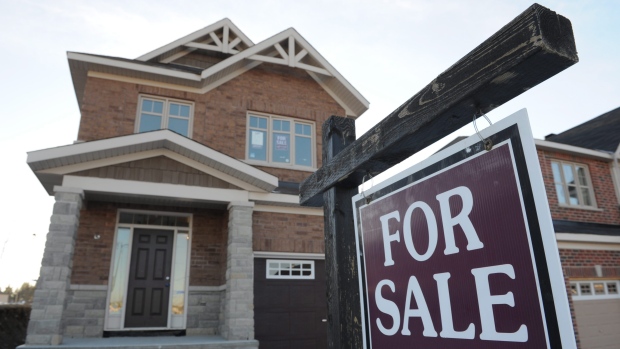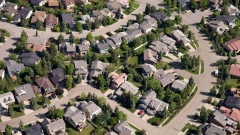The federal government has introduced numerous measures in recent years in efforts to stabilize housing markets. Here's a quick look at some of them:
Oct. 3, 2016: The federal government says that as of Oct. 17, all insured mortgages will have to undergo stress tests to determine whether borrowers will still be able to make their mortgage payments if interest rates rise or they lose their jobs. A tax exemption for capital gains made when homeowners sell their primary residences is also limited to Canadian residents.
Feb. 15, 2016: The minimum down payment for new government-backed insured mortgages increases from five per cent to 10 per cent for the portion of a house price over $500,000.
July 9, 2012: The maximum amortization period for new government-backed insured mortgages drops to 25 years from 30 years. Ottawa lowers the maximum amount Canadians can borrow when refinancing to 80 per cent from 85 per cent and stops offering insurance on mortgages for homes worth more than $1 million.
April 18, 2011: Ottawa withdraws government insurance backing on lines of credit secured by homes, such as home equity lines of credit.
March 18, 2011: The maximum amortization period for government-backed insured mortgages is cut to 30 years from 35 years and the maximum amount Canadians can borrow in refinancing their mortgages is reduced to 85 per cent from 90 per cent of the value of their homes.
April 19, 2010: Ottawa introduces a requirement that all borrowers meet the standards for a five-year fixed rate mortgage even if they choose a mortgage with a lower interest rate and shorter term. The government also lowers the maximum amount Canadians can withdraw in refinancing their mortgages to 90 per cent from 95 per cent of the value of their homes and requires a minimum down payment of 20 per cent for government-backed mortgage insurance on non-owner-occupied properties bought for speculation.
Oct. 15, 2008: The maximum amortization period for new government-backed mortgages is fixed at 35 years and a requirement for a minimum down payment of five per cent is introduced. Ottawa also establishes a consistent minimum credit score requirement and introduces new loan documentation standards.









